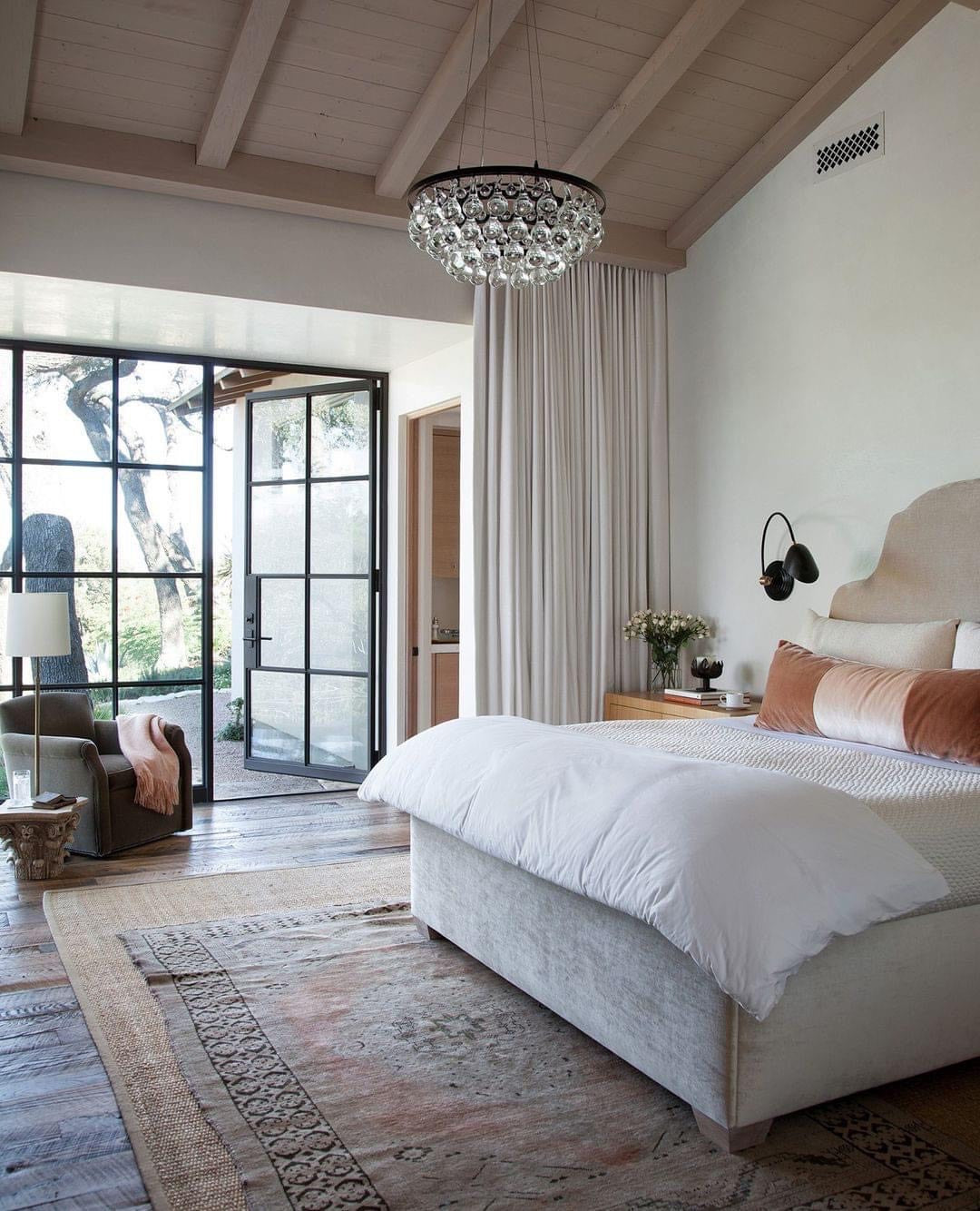As summer comes to an end, there’s a good chance that your bed isn’t at its best right now, particularly if you’re a fan of all-white sheets. Sweat and sand don’t really do linens any favors—nor do they make the most inviting bed. In anticipation of fall and the promise of crisper, more bedding-friendly weather, let's walk through the paces of making—and caring for—a great bed, along with the linen lines that tend to wear and feel the best.
Decoding Hand and Threadcount
The “hand” describes a particular quality that a fabric has in weight, texture, and feel. When you think about your clothing preferences—cashmeres, flannels, sweats, silk, pressed lightweight cotton—that should help direct you to the type of sheet you’d like, whether it’s percale, sateen, linen, or flannel. Threadcount indicates the number of threads used in one square inch of material.
SATEEN: Sateen is a floating weave that creates a softer surface that’s not quite as durable. Sateens tend to use wrapped fibers, which is what creates a higher threadcount of 800 to 1000. These dense weaves don’t breathe as well during warmer weather.
LINEN & BAMBOO: Bamboo and linen are considered more environmentally friendly as they tend to be produced in an organic way. Linen is unique in price point and look and feel. Linen integrates well into a shabby chic or softer, modern look. When you first buy the sheets the fabric may seem coarse but with washings it become softer over time. If you have the room you may want to hang linen sheets to try. Bamboo sheets, meanwhile, are very soft and slippery. They don’t breathe that well but do absorb and wick moisture.
EGYPTIAN COTTON: Egyptian cotton and pima cotton have come to describe a longer strand fiber when pulled from a cotton ball. The result of this longer strand in weaving is a stronger and smoother weave that endures more washing and pills less.
Making the perfect bed
It goes without saying that there are many ways to make a bed, as some people like to be swaddled like a baby or want to be able to kick free all night. Preferences aside, lets get into the basics on a well-styled bed:
- Fitted sheet first, preferably out of a medium-heat dryer. Don’t let them sit or they’ll just become more wrinkled. Start with top corners and move down to the bottom, pressing out the wrinkles with your hands as you go.
- Place the flat sheet on next, squaring it evenly to give yourself enough slack for whatever cuff size you prefer. (If you like a modern look, make a wider, 10″-16″ cuff on the turn-down fold. If you like a more traditional look, 6″-10″ is the perfect cuff width.) If you don’t want your sheets too tight, lay two to three pillows down the midline before placing the sheet.
- Place whatever blanket you are going to use over the fitted sheet and square it.
- For a duvet, place the cover on right out of the dryer and shake it out. Pull all four corners taut. If you want your down comforter to look fluffier, go down a size for the duvet cover( i.e., place a king duvet in a queen-sized cover).
Caring for your linens
(and keeping them white):
Washing
Use warm water and no bleach, as it wears the fabric down. Also skip the fabric softener, as it builds up in the material and doesn’t rinse out. It destroys towels, too!
Keeping Whites White
Use a mild cleaning agent such as a natural based linen wash or detergent. For stains, use baking soda and white vinegar. Add half a cup of baking soda with your detergent at the beginning of the wash cycle. Then, at the start of the rinse cycle, pour in half a cup of white vinegar. These two natural whiteners also have a softening effect. If that doesn’t do the trick, try oxygen-based whiteners such as Borox and Nellies All-Natural.
Use bleach as a last recourse. Bleach is very tough on the fibers of fabrics and can shorten their lives substantially, and should never be used on linen. The fibers will become brittle and eventually start fraying. Also, bleach can interact with sweat on whites and create yellow stains.
Drying
Don’t over dry your beautiful sheets! If you’re going to press them save the life of your sheets and your arms by taking them out while still damp and pressing them at that time.
Washing Machine Maintenance
It’s critical to keep your cleaning tools clean, so start a monthly maintenance habit of running an empty load with hot water and one cup of distilled white vinegar and one cup of baking soda. You may notice that water can pool in the base of those front loaders. Just wipe down the interior every now and then. If the machine is going unused for an extended period of time, leave the door ajar. Another cleaning tool to maintain is your beautiful smooth iron plate.
Storing
Put each set in its pillow case and store by size in the bottom drawer of a dresser in the room in which it belongs. If space is precious, store the change of sheets between the box spring and the mattress. Down comforters should always be stored in breathable fabric.


